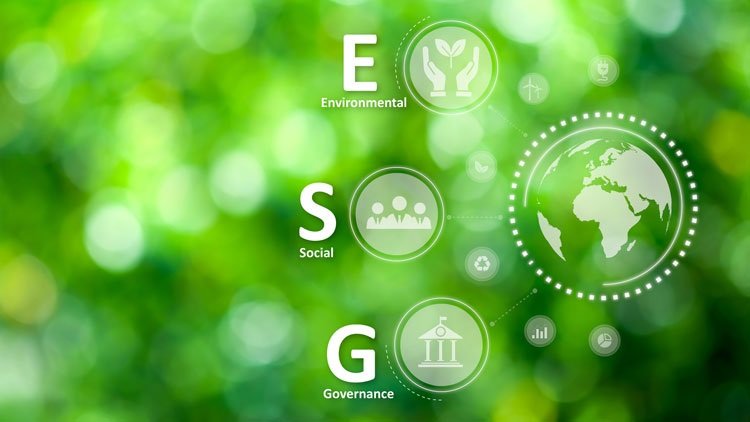NEW DELHI (India CSR): In today’s business climate, sustainability is no longer a buzzword, it’s a benchmark. Stakeholders, investors, and regulatory bodies are holding companies accountable for their environmental footprint. While many organizations have adopted sustainability goals, few realize that the key to achieving and verifying these goals lies in one of the most practical tools available: environmental audits.
From reducing operational risks to supporting transparent ESG (Environmental, Social, and Governance) reporting, environmental audits serve as a foundational element of any serious sustainability strategy.
What Are Environmental Audits?
An environmental audit is a systematic, documented evaluation of how well a company’s operations align with environmental laws, internal policies, and best sustainability practices. These audits help organizations identify potential risks, ensure regulatory compliance, and uncover opportunities for improvement.
Types of Environmental Audits
Compliance Audits: Focus on adherence to local, state, and national environmental regulations.
Management System Audits: Evaluate internal environmental policies and procedures, such as ISO 14001 standards.
Functional Audits: Target specific aspects like air quality, hazardous material management, water usage, or waste disposal.
Each type offers insights into a different layer of an organization’s environmental impact, contributing collectively to a well-rounded sustainability framework.
GAC Environmental: Enabling Audit-Driven Sustainability
As a leader in environmental consulting and compliance, gacenvironmental.net offers a comprehensive suite of audit and testing services that empower companies to integrate environmental intelligence into their decision-making. From mold and asbestos inspections to indoor air quality and water testing,
GAC helps organizations across sectors assess, correct, and improve their environmental performance.
Why Choose GAC?
- Certified auditors and inspectors with industry-specific knowledge
- Detailed reporting suitable for regulatory and ESG submissions
- Quick turnaround for fast-paced industries and development projects
GAC’s commitment to transparency and precision makes it a preferred partner for companies looking to meet sustainability goals with confidence.
Why Environmental Audits Are Central to Corporate Sustainability
Environmental audits are not just about spotting violations, they’re about driving responsible business practices that benefit both the planet and the company.
Identifying Hidden Risks
Audits reveal areas where a company may be unintentionally harming the environment, such as undisclosed asbestos, improper waste handling, or poor indoor air quality. Left unaddressed, these issues can become legal liabilities and tarnish reputations.
Enabling Continuous Improvement
Audits provide measurable data that organizations can use to track progress against sustainability KPIs. This helps businesses pivot strategies, allocate resources wisely, and set realistic environmental targets.
Supporting ESG and CSR Reporting
As sustainability reporting becomes mandatory in many sectors, environmental audit results feed directly into ESG disclosures and CSR initiatives. Transparent reporting improves stakeholder trust and investor appeal.
Case for Environmental Audits in India’s Growing CSR Landscape
India’s regulatory and social frameworks are evolving rapidly. With the Companies Act mandating CSR spending, environmental responsibility is becoming a key area of investment for Indian corporations.
Compliance with Local and National Laws
Environmental audits help companies meet requirements from bodies such as the Central Pollution Control Board (CPCB), State Environmental Impact Assessment Authorities (SEIAAs), and other local regulators.
Preparing for Sustainability Certifications
Whether it’s LEED, IGBC, or ISO 14001, audits provide the baseline data and corrective actions needed to secure green certifications, which are increasingly valued in competitive bidding and investor relations.
Enhancing Public Perception
In a country where environmental degradation is a pressing concern, companies that proactively audit and disclose their environmental impact earn public trust and brand loyalty.
Key Audit Areas That Influence Sustainability Strategy
| Audit Focus Area | Sustainability Impact | Example Improvements |
| Air Quality | Affects employee health, emissions levels | Install filtration or improve HVAC |
| Water Usage & Wastewater | Conserves resources, prevents contamination | Recycle water, upgrade systems |
| Hazardous Materials | Mitigates legal risk, improves workplace safety | Remove asbestos, proper storage |
| Energy Consumption | Reduces carbon footprint and operational costs | LED lighting, renewable energy use |
| Mold and Moisture | Impacts IAQ and long-term infrastructure health | Dehumidification and insulation |
Steps to Integrate Environmental Audits into Your Sustainability Strategy
1. Conduct a Baseline Assessment: Start with a full environmental audit to identify existing risks and inefficiencies.
2. Set Measurable Goals: Use audit data to set SMART (Specific, Measurable, Achievable, Relevant, Time-bound) sustainability objectives.
3. Implement Corrective Actions: Address issues through operational changes, technology upgrades, or employee training.
4. Monitor and Re-Audit Regularly: Sustainability is an ongoing journey. Schedule periodic audits to measure progress and realign strategies.
5. Report Transparently: Share audit outcomes in your CSR reports or ESG disclosures to demonstrate accountability.
Conclusion
Sustainability is not achieved through marketing; it requires method, measurement, and accountability. Environmental audits provide the data, insights, and structure needed to guide meaningful change in an organization’s sustainability journey.
By embracing audits as a strategic tool not just a compliance formality companies can future-proof their operations, elevate their brand, and contribute genuinely to environmental responsibility.
(India CSR)





